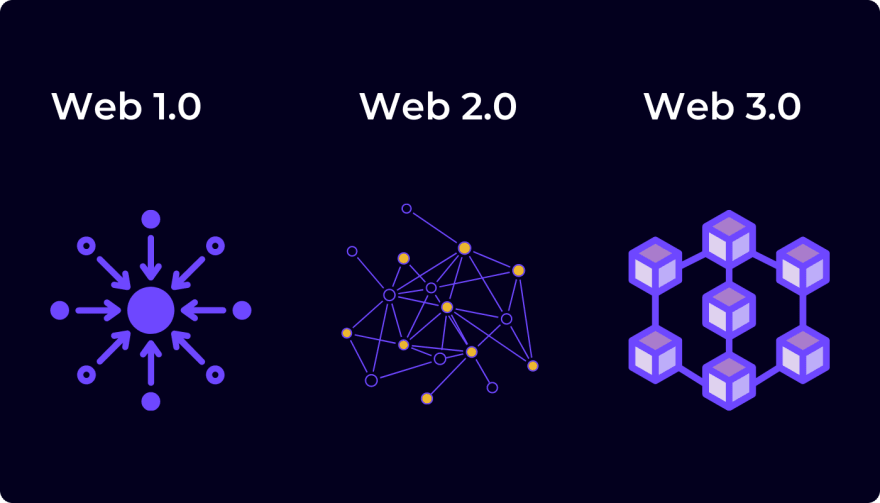WEB 3.0 : Comprehending the Enigma
Suppose you are even remotely connected to the tech world and its current ongoing in one form or another. In that case, you must have been shot at with this mysterious term “web3” in articles, Twitter threads, or direct conversations. You must have been left wondering what the heck is this term that everyone is going so crazy about? Whether your curiosity brought you here or you just chanced upon this article in a lazy scroll, worry not because we are going to demystify web3 for you here in an easy way.
Web3 or Web3.0 is the idea of a decentralized online ecosystem based on blockchain. It is a work in progress and the technologies supporting web3 are still in the early stages of development. But, it can’t be denied that web3 is the future of the internet. It is absolutely critical for you to know about it so that you can hop on the ride as early as possible. So let’s take a closer look into the idea.
Why is Web 3.0 so critical?
As we cruise through the web evolution, we saw that web1.0 was just some static websites put together on the internet. During this time the user was just a consumer. Then as we have been moving through the web2 phase of the evolution, now we have two-way interactivity between the websites and the users. Not only the user is consuming website data, but the website is also feeding on user data. What has happened due to this is that a certain few organizations have become so big that they sort of control a major portion of the internet. They have access to a huge chunk of our information which allows them to play a dominant role in determining how we use the internet. Web3 aims to change this and hand the control back to the internet crowd.
Web3 is all about a concept called decentralization which means having no central authority by distributing control to the peers or nodes present on the network. You can think about it as living in a virtual society where there is no one governing body but every person in the society is responsible for governance. It will help solve the problems that arise with the centralization of power like unjust data trade-off, authoritarian control, lesser security and more vulnerabilities by distributing power amongst the peers.
What is happening with Web3 now?
Web3 as a concept is still in its early stages, but despite that, it has become too big to overlook. By “big” I not only mean the universal craze of web3 applications but also the amount of capital that is being poured in through various faucets like NFTs, DAOs and of course cryptocurrencies. We right now find ourselves well into a big web3 boom. The rise has been just meteoric over the past few years and is expected to grow exponentially into the future.
With more and more governments and ruling authorities accepting cryptocurrencies as a medium of transaction, the ease of doing business in web3 is increasing resulting in more and more people coming in and exploring the space. Mega pop artists like Snoop Dogg and Liam Payne are actively advertising NFTs. Developers, creators, artists, and investors are all coming together and collectively building the backdrop of what the web3 is going to be like in the near future.
What does the future look like?
The web3 future looks remarkably stimulating. If we scan the ongoing projects and startups in the web3 paradigm we come across multi-million dollar platforms like OpenSea and Decentraland. We have side-chain projects like Polygon and Binance Smart Chain hosting billions of dollars in exchanges. Along with these, we have numerous startups working in the field of web3 making it available for utilisation by the general public.
All in all the future of the internet seems to be shifting towards a decentralized environment and the coming years are expected to witness groundbreaking innovations and business development.
Naman Mishra(namanmishra1900@gmail.com)





Top comments (2)
Sounds like a really slow way to open a website..
Not the website but the stuff you do on the website if needed to get verify may take time on native blockchains. But now there are multiple Layer2 solutions for it which makes the process occur within fractions of a second.